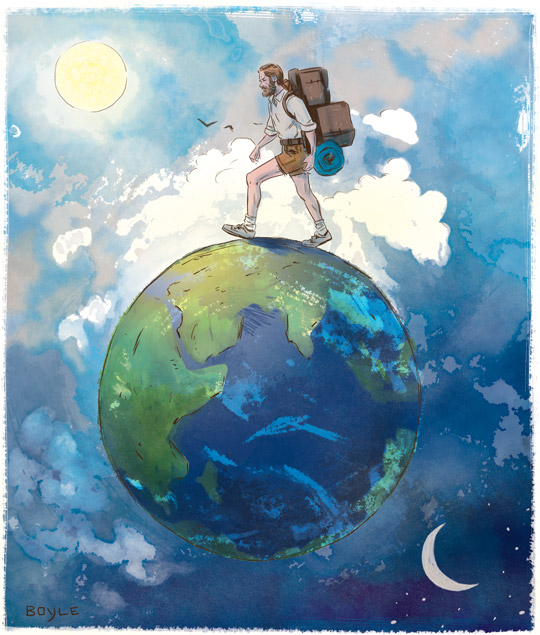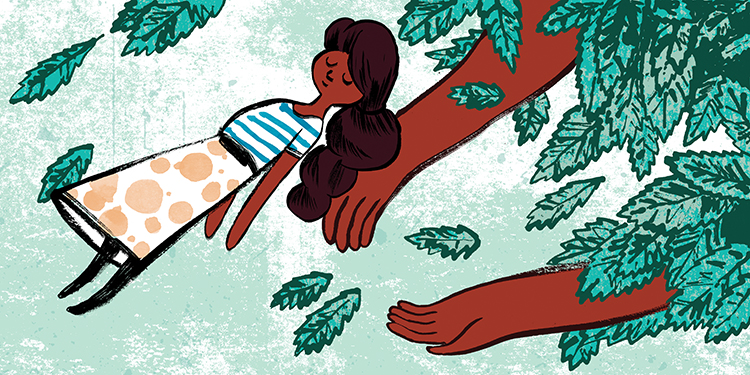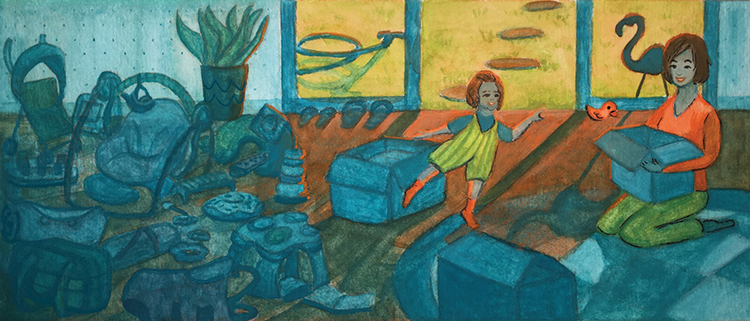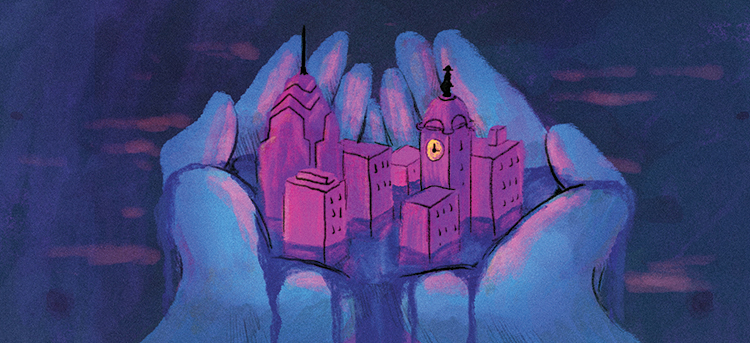What a sustainability leader learned walking
from Boston to San Diego
 Illustration by James BoyleIntending to reinvent myself as an urban ecologist, I began walking from my home in Boston toward the Pacific Ocean via San Diego. After 199 days and 3,500 miles, I covered a distance greater than the diameter of the moon, or halfway to the center of the earth.
Illustration by James BoyleIntending to reinvent myself as an urban ecologist, I began walking from my home in Boston toward the Pacific Ocean via San Diego. After 199 days and 3,500 miles, I covered a distance greater than the diameter of the moon, or halfway to the center of the earth.
Where did it get me? To new places, exposed to people, animals and storms. To novel encounters daily. Through forests, fields, deserts, mountains and rivers. Having started with $20 and a slim backpack, I worked odd jobs to buy supplies: picked apples in a migrant camp, taught half a day of school, hauled lumber, mopped floors, joined a carnival and built a donkey shed.
I discovered that the whole world is a bed, finding shelter in apple orchards, barns, pastures, sheds, log cabins, wagons, abandoned homes, haystacks, churches, greenhouses, trailers, picnic tables, porches, gazebos, parks, stables, grandstands, sand dunes and yards. And I rediscovered that people are generous. I appeared from the woods at their doors, shared meals, attended parties, reunions and ice cream socials, and learned much of enduring worth.
After several years organizing fights against highways and suburban sprawl, I sought a more powerful protest—to invent positive scenarios enabling cities to become beautiful blooms on the planet, rather than open sores. Cities that moved better without cars, cities that grew their own food and harvested their own water, where people would replenish what they’d consume.
After completing the hike in December 1978, I moved to Los Angeles. In 1983, after studying the metropolis, I started Citizen Planners, an organization dedicated to ecological urban design. People joined upon reading my 1982 book, Los Angeles: A History of the Future, which describes how that car-crazy region can be rebuilt systematically over decades toward balance with nature. Not utopia floating beyond reach, but a practical agenda.
The gap between Los Angeles and sustainability is so gigantic that the transformations required to fill that gap are huge. My book described and designed vast gradual changes to actual four-block and square-mile sections, where automobiles are gradually replaced by trolleys, bike paths and footpaths. Housing would be rebuilt as “ecolonies” that need no fossil fuels for heating and cooling. Water use would be cut in half by replacing flush toilets with waterless biodigesters. Even streets would yield right-of-way to greenhouses and orchards.
Citizen Planners quickly grew. Talented professionals and forward-thinking neighbors quickly joined. The city that has rebuilt itself several times, from massive ranch to massive orchard to massive traffic jam, seemed ready for its next era. The group continues today as the Eco-Home Network, effectively modeling and promoting the policy changes required.
Clearly, we Americans have the talent and good will to build healthy futures. Whether urban or rural, we are everywhere very decent, magnificent and ignorant. We are tough and lovable; we hog the earth and devour its wealth. In every city and suburb, we will continue to learn, by intelligent transition or headlong catastrophe, to bind American lives to the resources of the land.
The journey will be long, but keep this in mind: Reaching any distant shore begins with our first steps today.






Wow! It is great image and well design from your site.